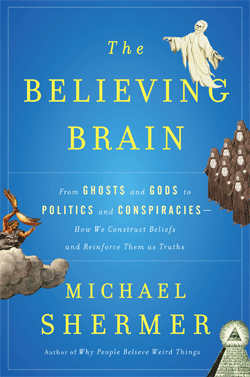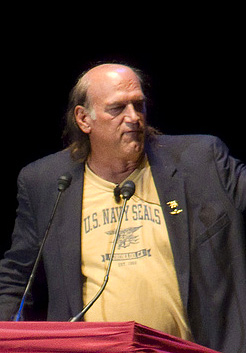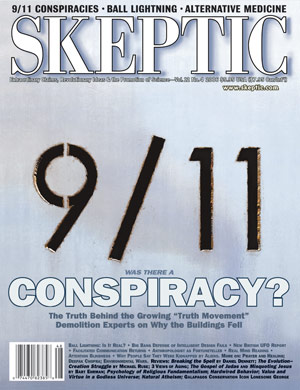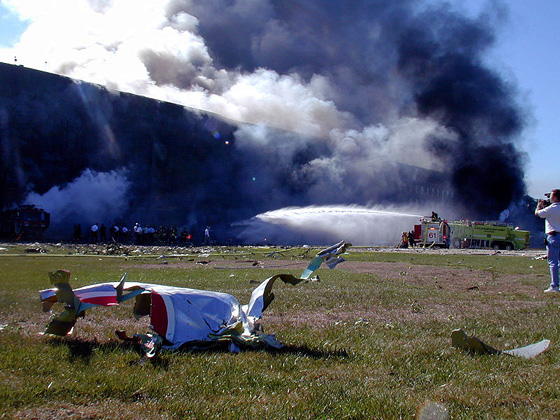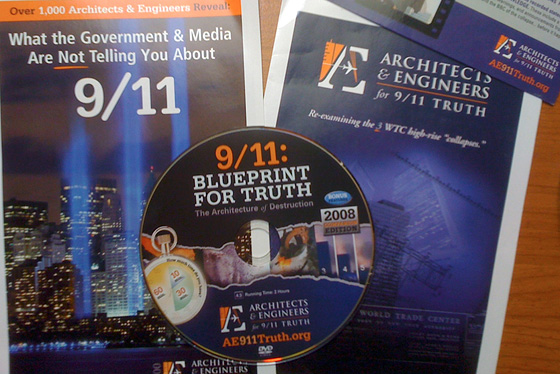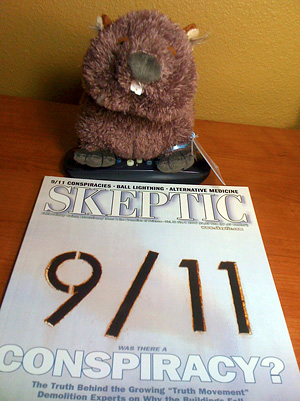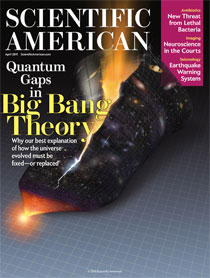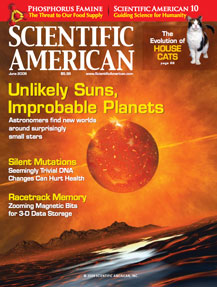Demographics of Belief
The following excerpt is from the Prologue to my new book, The Believing Brain: From Ghosts, Gods, and Aliens to Conspiracies, Economics, and Politics—How the Brain Constructs Beliefs and Reinforces Them as Truths. The Prologue is entitled “I Want to Believe.” The book synthesizes 30 years of research to answer the questions of how and why we believe what we do in all aspects of our lives, from our suspicions and superstitions to our politics, economics, and social beliefs. LEARN MORE about the book.
According to a 2009 Harris Poll of 2,303 adult Americans, when people are asked to “Please indicate for each one if you believe in it, or not,” the following results were revealing:1
- 82% believe in God
- 76% believe in miracles
- 75% believe in Heaven
-
73% believe in Jesus is God
or the Son of God - 72% believe in angels
-
71% believe in survival
of the soul after death -
70% believe in the
resurrection of Jesus Christ - 61% believe in hell
-
61% believe in
the virgin birth (of Jesus) - 60% believe in the devil
-
45% believe in Darwin’s
Theory of Evolution - 42% believe in ghosts
- 40% believe in creationism
- 32% believe in UFOs
- 26% believe in astrology
- 23% believe in witches
- 20% believe in reincarnation
Wow. More people believe in angels and the devil than believe in the theory of evolution. That’s disturbing. And yet, such results should not surprise us as they match similar survey findings for belief in the paranormal conducted over the past several decades.2 And it is not just Americans. The percentages of Canadians and Britons who hold such beliefs are nearly identical to those of Americans.3 For example, a 2006 Readers Digest survey of 1,006 adult Britons reported that 43 percent said that they can read other people’s thoughts or have their thoughts read, more than half said that they have had a dream or premonition of an event that then occurred, more than two-thirds said they could feel when someone was looking at them, 26 percent said they had sensed when a loved-one was ill or in trouble, and 62 percent said that they could tell who was calling before they picked up the phone. In addition, a fifth said they had seen a ghost and nearly a third said they believe that Near-Death Experiences are evidence for an afterlife.4
Although the specific percentages of belief in the supernatural and the paranormal across countries and decades varies slightly, the numbers remain fairly consistent that the majority of people hold some form of paranormal or supernatural belief.5 Alarmed by such figures, and concerned about the dismal state of science education and its role in fostering belief in the paranormal, the National Science Foundation (NSF) conducted its own extensive survey of beliefs in both the paranormal and pseudoscience, concluding with a plausible culprit in the creation of such beliefs:
Belief in pseudoscience, including astrology, extrasensory perception (ESP), and alien abductions, is relatively widespread and growing. For example, in response to the 2001 NSF survey, a sizable minority (41 percent) of the public said that astrology was at least somewhat scientific, and a solid majority (60 percent) agreed with the statement “some people possess psychic powers or ESP.” Gallup polls show substantial gains in almost every category of pseudoscience during the past decade. Such beliefs may sometimes be fueled by the media’s miscommunication of science and the scientific process.6
I too would like to lay the blame at the feet of the media, or science education in general, because the fix then seems straightforward—just improve how we communicate and educate science. But that’s too easy. In any case, the NSF’s own data do not support it. Although belief in ESP decreased from 65% among high school graduates to 60% among college graduates, and belief in magnetic therapy dropped from 71% among high school graduates to 55% among college graduates, that still leaves over half of educated people fully endorsing such claims! And for embracing alternative medicine, the percentages actually increased, from 89% for high school grads to 92% for college grads.
Perhaps a deeper cause may be found in another statistic: 70% of Americans still do not understand the scientific process, defined in the NSF study as grasping probability, the experimental method, and hypothesis testing. So one solution here is teaching how science works in addition to the rote memorization of scientific facts. A 2002 article in Skeptic magazine entitled “Science Education is No Guarantee of Skepticism,” presented the results of a study that found no correlation between science knowledge (facts about the world) and paranormal beliefs. The authors, W. Richard Walker, Steven J. Hoekstra, and Rodney J. Vogl, concluded: “Students that scored well on these [science knowledge] tests were no more or less skeptical of pseudoscientific claims than students that scored very poorly. Apparently, the students were not able to apply their scientific knowledge to evaluate these pseudoscientific claims. We suggest that this inability stems in part from the way that science is traditionally presented to students: Students are taught what to think but not how to think.”7 The scientific method is a teachable concept, as evidenced in the NSF study that found that 53% of Americans with a high level of science education (nine or more high school and college science/math courses) understand the scientific process, compared to 38% with a middle level (six to eight such courses) of science education, and 17% with a low level (less than five such courses) of science education. So maybe the key to attenuating superstition and belief in the supernatural is in teaching how science works, not just what science has discovered. I have believed this myself for my entire career in science and education. If I didn’t believe it I might not have gone into the business of teaching, writing, and editing science in the first place.
Alas, I have come to the conclusion that belief is largely immune to attack by direct educational tools, at least for those who are not ready to hear it. Belief change comes from a combination of personal psychological readiness and a deeper social and cultural shift in the underlying zeitgeist of the times, which is affected in part by education, but is more the product of larger and harder-to-define political, economic, religious, and social changes.
DOWNLOAD my reading of the prologue (48MB MP3)
FOLLOW me on Twitter
References
- www.harrisinteractive.com/vault/Harris_Poll_2009_12_15.pdf
-
www.gallup.com/poll/16915/Three-Four-Americans-Believe-Paranormal.aspx
Similar percentages of belief were found in this 2005 Gallup Poll:
Psychic or Spiritual Healing 55% Demon possession 42% ESP 41% Haunted Houses 37% Telepathy 31% Clairvoyance (know past/predict future) 26% Astrology 25% Psychics are able to talk to the dead 21% Reincarnation 20% Channeling spirits from the other side 9% - www.gallup.com/poll/19558/Paranormal-Beliefs-Come-SuperNaturally-Some.aspx
- news.bbc.co.uk/2/hi/uk_news/5017910.stm
- Gallup News Service. 2001. “Americans’ Belief in Psychic Paranormal Phenomena is up Over Last Decade.” June 8.
- National Science Foundation. 2002. Science Indicators Biennial Report. The section on pseudoscience, “Science Fiction and Pseudoscience,” is in Chapter 7. Science and Technology: Public Understanding and Public Attitudes. Go to: www.nsf.gov/sbe/srs/seind02/c7/c7h.htm.
- Walker, W. Richard, Steven J. Hoekstra, and Rodney J. Vogl. 2002. “Science Education is No Guarantee of Skepticism.” Skeptic, Vol. 9, No. 3, 24–25.


